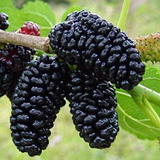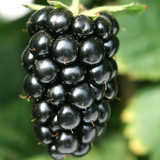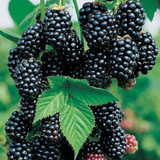Exotic mulberry tree
Scientific name:Morus nigra,
English Name: Mulberry
Local Name: Maluben (B, N)
General information
Native to Iran, Morus nigra is a deciduous tree, slender but with many branches. It grows to 6-9m in height, but it tends to be a bush if not trained when young. The leaves are rough on upper surfaces and young underneath often producing leaves of several different shapes, with 1 or more portions, multi-portioned leaves often appearing on the same branches. Abnormally shaped leaves usually produced from stem shoots or sucker growths, and frequently by very strong young branches. Flowers held on short, green, overhanging, ordinary flowers that appear in the axils of the current season’s growth and on spurs on older wood. The flowers appear in 1.3cm rough clusters.
Health benefits
Morus nigra is used in modern medicine for the preparation of a syrup gotten from the ripe fruit used to flavor or color other medicines. It is a dark violet or purple liquid, with a faint odor and a refreshing, sweet-acid taste. The bark is a reputed anthelmintic, used to eject tapeworms. A leaf, flower or root extract can be gargled for diabetes; fever, sore throat and swollen vocal chords are treated with fruit juice.
Livestock benefits
The leaves of Morus nigra are also used for raising silkworms and have been used as a feed for livestock.
Both cattle and goats browse the leaves and shoots.
Human benefits
The ripe fruit contains about 9% sugar, with malic and citric acid. Berries can be eaten raw or dried, or used in pies, pastries, puddings, conserves, jams, or sweetened and pounded as a sauce; slightly unripe fruit is best for pies and pastries. Mulberries blend well with other fruit, especially pears and apples. The fruit can also be pounded to a fine powder and mixed with the flour for bread. Pruned and dead branches are suitable for firewood. The wood is used in joinery for articles subject to wear, for lathe work, and in the manufacture of barrels, caskets, snuffboxes and cups.
Planting and tree management
Trees grow very rapidly, need full sun, adequate space (at least 4.5 m between each tree) and generally thrive with minimal fertilization. Although somewhat drought resistant, they need to be watered in the dry season; if the roots become too dry, the fruit are likely to drop before being fully ripened. Pot trees need repotting each year before new growth commences.






